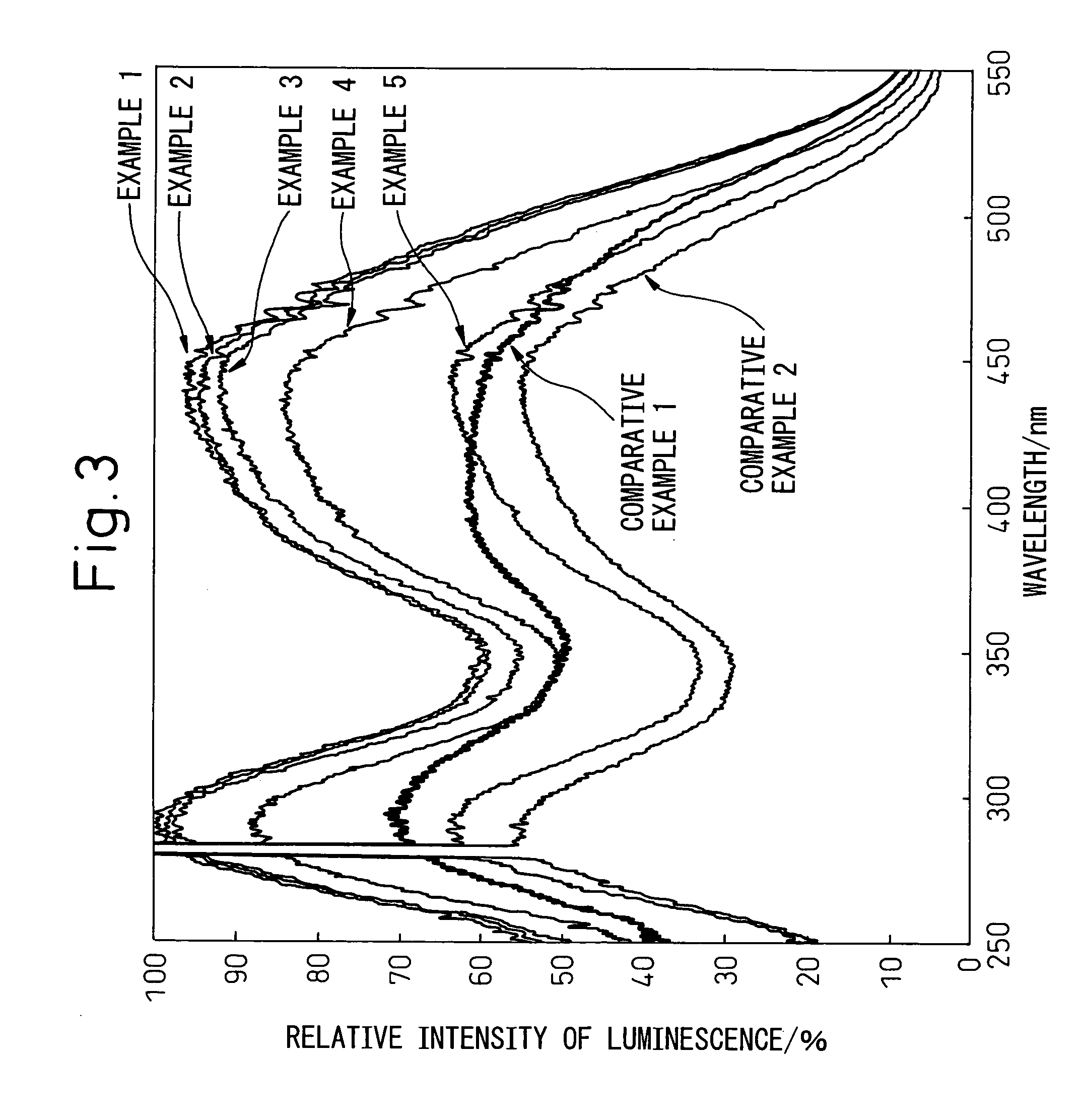Sialon-based phosphor and its production method
a phosphor and sialon technology, applied in the field of oxynitride phosphor, to achieve the effect of remarkably enhanced photoluminescent intensity and efficiently obtained
- Summary
- Abstract
- Description
- Claims
- Application Information
AI Technical Summary
Benefits of technology
Problems solved by technology
Method used
Image
Examples
example 1
An amorphous silicon nitride powder obtained by the thermal decomposition of silicon diimide produced by reacting silicon tetrachloride and ammonia at room temperature, an aluminum nitride powder, a calcium carbonate powder, a europium oxide powder and lithium carbonate were weighed to give a composition shown in Table 1. The weighed powders were mixed by a vibration mill for 1 hour in a nitrogen atmosphere. The resulting powder mixture was filled in a carbon-made crucible, the crucible was set in a induction heating furnace and the furnace was heated by a temperature-rising schedule of holding the furnace at from temperature to 1,200° C. for 1 hour, at from 1,200 to 1,400° C. for 4 hours and at from 1,400 to 1,700° C. for 3 hours, whereby a sialon powder was obtained. This powder was evaluated on photoluminescent properties under the same conditions as in Comparative Example 1 by a photoluminescent measuring apparatus set to an excitation wavelength of 450 nm. A photoluminescent e...
examples 2 to 5
Sialon-based phosphor powders were produced in the same manner as in Example 1 except for changing the amounts of Li (factor x in formula (I)) and Ca (factor y in formula (I)) as shown in Table 1 and measured on the photoluminescent properties. The results are shown in FIG. 2.
example 6
An amorphous silicon nitride powder similar to that of Example 1, an aluminum nitride powder, a calcium carbonate powder, lithium carbonate and a terbium oxide powder were weighed so as to obtain a composition having formula (I) with x=0.075, y=0.488, z=0.15, m=1.5 and n=0.75. Terbium was assumed to be a trivalent. The weighed powders were mixed and fired in the same manner as in Example 1.
The thus obtained powder was evaluated on the photoluminescence spectrum by a photoluminescent measuring apparatus set to an excitation wavelength of 254 nm. FIG. 4 shows the results, in which photoluminescence from the f-f transition of Tb3+ was observed; the highest peak was present at around 544 nm; and the color of the spectrum was green. Incidentally the peak at around 507 nm is a peak appearing on measurement, not a peak form the sample. The photoluminescence of lithium-containing Sialon had an intensity about 1.6 times in comparison with Sialon containing no lithium.
PUM
| Property | Measurement | Unit |
|---|---|---|
| photoluminescent wavelength | aaaaa | aaaaa |
| valence | aaaaa | aaaaa |
| wavelength | aaaaa | aaaaa |
Abstract
Description
Claims
Application Information
 Login to View More
Login to View More - R&D
- Intellectual Property
- Life Sciences
- Materials
- Tech Scout
- Unparalleled Data Quality
- Higher Quality Content
- 60% Fewer Hallucinations
Browse by: Latest US Patents, China's latest patents, Technical Efficacy Thesaurus, Application Domain, Technology Topic, Popular Technical Reports.
© 2025 PatSnap. All rights reserved.Legal|Privacy policy|Modern Slavery Act Transparency Statement|Sitemap|About US| Contact US: help@patsnap.com



